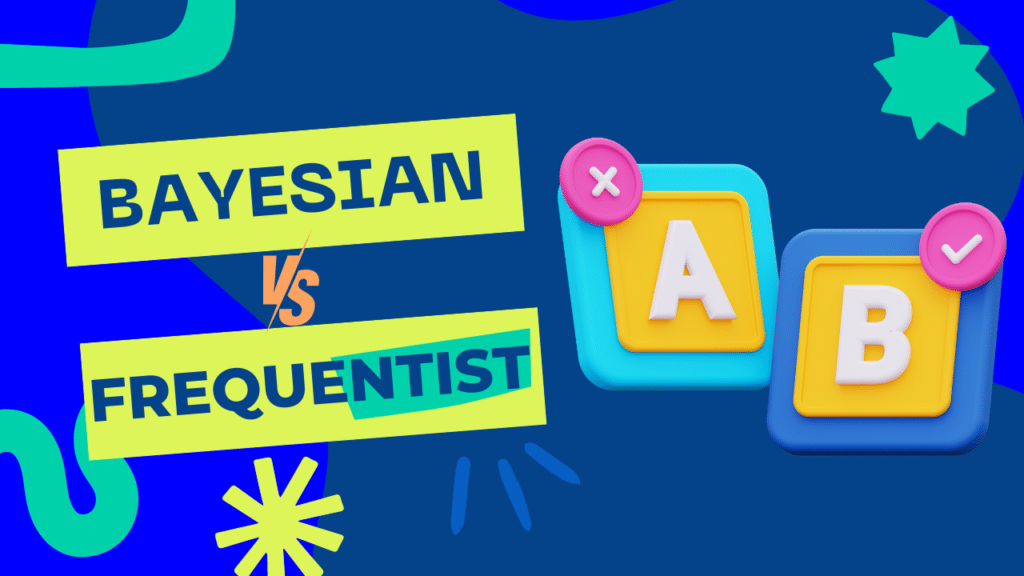We have updated this list and added more marketing books that every marketer should cover if they want to accelerate their growth in this field. Below this first list, we have added more marketing books that you should add to your reading list immediately.
Suppose you are in the online marketing business. In that case, you already know that regardless of how many academic courses you took in college or how many hours you spent listening to your teachers, the most you will ever gain is some basic knowledge that will not take you to the cutting edge.
Online marketing is a highly evolving field with new techniques, theories, tactics, and tools emerging every day, and the only way to stay on top is to stay tuned and on standby, ready to grab anything new and useful.
Times are changing. With time, marketing techniques and the overall industry are continuously evolving.
Amid this change, it’s essential to know the ins and outs of the marketing world—not just about the new strategies but also the all-time classics that have always worked and will continue to work.
Whether you’re a seasoned marketer, just starting out, or a small business owner, the wealth of knowledge in the best marketing books can offer new perspectives and refined tactics essential for success. But with thousands of titles, how do you know which will elevate your marketing game?
As a Ph.D. with a deep understanding of marketing’s nuances and complexities, I have curated a list of the 21 best marketing books of all time.
We divided these books into thoughtful categories to cater to diverse needs and interests:
- General Marketing – Essential reads for broad marketing knowledge.
- Consumer Behavior & Persuasion – Insights into the psychological aspects of marketing.
- Content Marketing – Strategies for crafting compelling narratives.
- Social Media Marketing – Tactics for leveraging digital platforms.
- Strategy & Innovation – Guides for forward-thinking marketing approaches.
Stick around until the end, as we’ll also discuss five bonus marketing tips for 2024, leveraging the latest trends and research to help you grow your business.
Top 10 Best Marketing Books of All Time: All-Time Classics
Here are the top 10 best marketing books of all time, each a valuable resource for anyone looking to succeed in the competitive marketing industry.
1. Positioning by Al Ries & Jack Trout
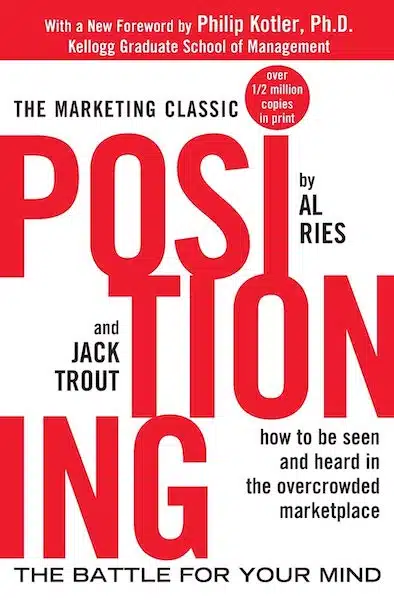
Positioning by AI Ries and Jack Trout is one of the best marketing books of all time. It’s a classic and one of the first books to discuss the problems of communicating to a skeptical, media-blitzed public.
This book takes a revolutionary approach to creating a “position” in a prospective customer’s mind, reflecting a company’s strengths and weaknesses and those of its competitors.
Key Takeaways From Positioning
- Positioning is about perception: Positioning is not just what you do with your product; it’s what you do in the consumer’s mind. (Page 23:)
- The importance of simplicity: A simple and focused message will be more effective than a complex and confusing one. (Page 82: Chapter 6 -)
- Repositioning is difficult: Changing customer perception is hard once a brand establishes a position. It’s much easier to create a new position. (Page 140: Chapter 10 -)
- Differentiation is key: Find a unique selling proposition (USP) that sets you apart. (Page 64: Chapter 5 – )
- Repetition is essential: Repeat your message consistently over time to reinforce your brand’s position and make it more memorable. (Page 94: Chapter 7 -)
2. Conversion Optimization by Khalid Saleh & Ayat Shukairy

Conversion Optimization by Khalid Saleh and Ayat Shukairy is a must-read marketing book. Considering the authors (us) are the experts behind the renowned conversion rate optimization agency Invesp, we know what we’re talking about.
With extensive experience in attracting online customers for businesses, the authors also cover every step of the conversion process, from attracting visitors to closing sales. This book teaches you various techniques to combine successful sales strategies with the specific needs of your target audience.
Conversion Optimization offers practical advice on persuading visitors to buy without driving them away through data overload or tedious navigation.
You will learn how to use your site’s marketing principles, design, usability, and analytics to increase your buyer-to-visitor ratio—whether you are involved with marketing, designing a large ecommerce site, or managing a modest online operation.
If you’re seeking a double-digit conversion rate, this is one of the best marketing books to read this year.
Key Takeaways From Conversion Optimization
- Understand Your Audience: Understanding your audience’s needs, preferences, and pain points will help you create targeted messaging and experiences that resonate with them. (Chapter 2, page 17)
- Test Everything: By testing different elements of your website or marketing campaigns, you can identify what works and what doesn’t and make data-driven decisions to improve your conversion rates. (Chapter 4, page 51)
- Focus on User Experience: By optimizing your website’s layout, navigation, and content, you can create a seamless experience that encourages visitors to take action. (Chapter 5, page 73)
- Use Social Proof: Social proof in the form of customer reviews, testimonials, and more will help you build trust and credibility with your audience and increase their likelihood of converting. (Chapter 7, page 106)
- Conversion optimization is an ongoing process: By constantly testing, tweaking, and optimizing your marketing efforts, you can stay ahead of the curve and improve your conversion rates over time. (Chapter 10, page 173)
3. Ogilvy on Advertising by David Ogilvy

Written by the founder of the Ogilvy & Mather advertising agency, Ogilvy on Advertising is one of the best marketing books of all time. It offers essential advice on advertising from one of the industry’s legends.
Throughout the book, Ogilvy emphasizes the importance of research-based advertising, compelling copy, and the art of selling.
The best part? He blends his theoretical advice with captivating case studies and illustrations to provide practical advice that transcends time.
He also discusses the effectiveness of visual aids and insists on professional discipline and relentless testing of different approaches.
Key Takeaways From Ogilvy on Advertising
- Consumer Research is Crucial. Understanding your market through thorough research is foundational to creating effective advertisements.
- Headlines Are Vital. Ogilvy provides extensive insights into writing headlines that grab attention.
- Maintain High Creative Standards. Quality and creativity in ad presentation enhance recall and persuasion. Ogilvy underscores the importance of maintaining high creative standards to stand out.
- Test Rigorously: Ogilvy advocates for rigorous testing of ads to ascertain what works best, suggesting that this practice can save money and increase campaign effectiveness.
Focus on Selling: Ogilvy reminds readers that no matter how entertaining an ad might be, it’s only good if it sells.
4. The 22 Immutable Laws of Marketing by Al Ries & Jack Trout

The list of the best marketing books wouldn’t be complete without mentioning the 22 Immutable Laws Of Marketing — a 1993 classic by Al Ries and Jack Trout. The 22 Immutable Laws Of Marketing is more of a guideline for marketers who want to make their products and services successful internationally.
Al Ries and Jack Trout highlight 22 marketing laws every marketer should follow in this book. Marketers sometimes spend resources on features that might not add value to their business growth. We recommend this book to marketers who need direction on what battles to fight and what to ignore.
Key Takeaways From The 22 Immutable Laws of Marketing
- Focus on one thing: According to the authors, the most successful brands focus on a single USP. Trying all things at once might dilute a brand’s message. (Chapter 1, pages 5-10)
- Perception is reality: How consumers perceive a brand is more important than the quality. (Chapter 2, pages 15-20)
- First-mover advantage: Being the first brand in a new category or market allows you to establish yourself as the leader and build a strong brand image before competitors enter the space. (Chapter 3, pages 23-27)
- The importance of consistency: All elements of the brand, including its name, logo, messaging, and advertising, must be consistent to create a cohesive and memorable brand image. (Chapter 9, pages 85-90)
- The law of sacrifice: To succeed in marketing, you must be willing to give up something in the short term to gain something in the long term. This may mean sacrificing some potential customers or markets to focus on your core strengths and target audience. (Chapter 20, pages 167-171)
5. Play Bigger, by Al Ramadan, Dave Peterson, Christopher Lochhead, and Kevin Maney
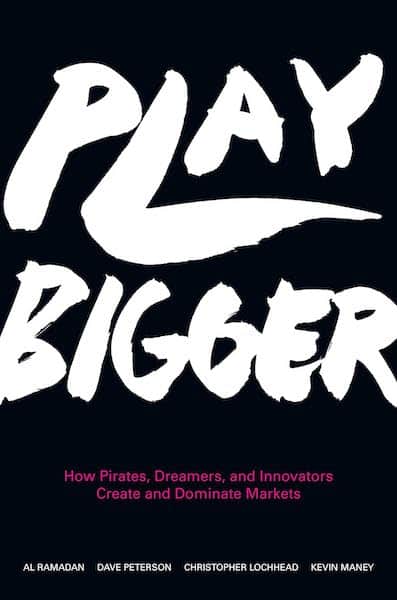
“Play Bigger” is a must-read for marketers and entrepreneurs looking to dominate their market and create new categories. Authored by Al Ramadan, Dave Peterson, Christopher Lochhead, and Kevin Maney, this book introduces the concept of “category design,” which is about creating and leading a new market category rather than competing in an existing one.
With their extensive experience in Silicon Valley, the authors share insights on how companies like Apple, Salesforce, and Amazon have become market leaders by defining and owning their categories. “Play Bigger” provides a framework for businesses to identify their unique space, develop a category, and dominate the market.
Key Takeaways From Play Bigger
- Category Design: The book emphasizes the importance of creating and leading a new market category rather than just competing in an existing one. (Introduction)
- Data-Driven Approach: The authors highlight using data analytics to identify market opportunities and design categories. (Chapter 4)
- Category King Advantage: The book explains how becoming a category king can lead to significant market share and revenue growth. (Chapter 6)
- Positioning for Success: “Play Bigger” provides strategies for positioning your company as the leader in your category. (Chapter 8)
Long-Term Vision: The book stresses the importance of having a long-term vision and patience while your category gains traction. (Chapter 10)
6. The Brand Gap by Marty Neumeier

Bridging the gap between brand strategy and design (execution) takes a lot of work. Marty Neumeier addresses these issues in his book “The Brand Gap” and elaborates on overcoming the brand gap.
The book also explores the five disciplines of great branding—differentiation, innovation, collaboration, validation, and cultivation. Neumeier suggests that to dominate your market or category, you must first master those five branding disciplines.
Key Takeaways From The Brand Gap
- Branding is not just about logos and visual identity. Neumeier argues that a brand is a person’s gut feeling about a product, service, or company. He calls this gut feeling the “brand gap” and suggests that it is the space between what a company does and what it means to its customers. (Chapter 1, p. 4)
- Successful brands differentiate themselves by focusing on their core values and personality. Neumeier suggests that brands should strive to be “meaningful, memorable, and likable” by developing a clear brand strategy that aligns with their core values and communicates their unique selling proposition. (Chapter 2, p. 19)
- A brand is more than the sum of its parts. Neumeier suggests that a brand is a holistic system that includes visual identity, customer experience, employee behavior, and overall company culture. (Chapter 3, p. 37)
- Brands must be flexible and adaptable to change. Successful brands can evolve, adapt to changing market conditions, and experiment with new ideas. (Chapter 5, p. 71)
- Communication is critical to building a solid brand. Clear, consistent messaging across advertising, social media, and customer service is crucial to effective brand communication. Authenticity and transparency are also vital for building customer trust and credibility. (Chapter 6, p. 89)
7. The Brand Flip by Marty Neumeier

Another classic by Marty Neumeier, The Brand Flip, challenges the traditional way of thinking about branding. Neumeier insists that the brand’s power is no longer with marketers or businesses but has been handed over to the consumer—thanks to social media.
He also challenges the notion that a marketing funnel represents branding. Instead, he suggests that marketers should see this flipped approach to branding as a ladder that customers climb. Satisfaction, engagement, delight, and empowerment are the rungs that make that ladder.
Key Takeaways From The Brand Flip
- The traditional brand model is no longer effective. The conventional brand model, which focuses on creating and broadcasting a polished image to customers, is no longer effective in today’s marketplace. Companies should focus on creating a brand based on authenticity, transparency, and customer engagement. (Chapter 1, pages 10-11)
- Branding is no longer the sole domain of marketing. Branding is now everyone’s job, from the CEO to the front-line employees. (Chapter 2, pages 30-31)
- The most successful brands are customer-driven. This means understanding your customers’ needs and wants and creating a brand that reflects those values. (Chapter 4, pages 76-77)
To succeed in branding, you need to be agile and adaptable. This means experimenting, taking risks, and pivoting quickly to changing market conditions or customer needs. (Chapter 9, pages 200-201)
8. Marketing Management by Philip Kotler
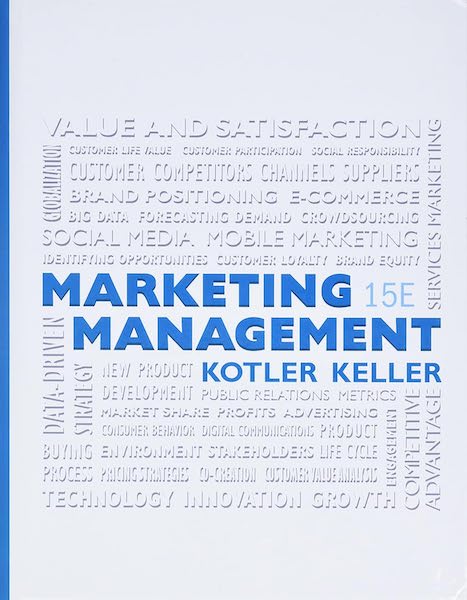
Often used as a textbook in university courses, Marketing Management by Philip Kotler (sometimes referred to as the ‘father of modern marketing’) covers comprehensive marketing strategies and theories.
The book covers a broad spectrum of essential topics, from understanding consumer behavior and segmentation to crafting strategic marketing plans and managing brands. You can easily apply Kotler’s insights in real-world scenarios.
Key Takeaways From Marketing Management:
- Consumer-Centric Strategy: Understanding and meeting the needs of your target customer is fundamental to successful marketing.
- Strategic Brand Management: Building and sustaining a strong brand requires consistently meeting customer expectations.
- Integrated Marketing Communications: Effective communication strategies involve a mix of marketing tools and channels that reinforce the brand message.
- Leveraging Technology: Modern marketing must integrate technology to analyze data, engage customers, and automate tasks.
- Global Marketing Strategies: Understanding global markets and localizing strategies accordingly can lead to international business success.
This marketing book is a must-read for anyone looking for fundamental marketing principles, strategic planning, and customer-centric approaches to reach and engage target audiences.
9. Purple Cow by Seth Godin
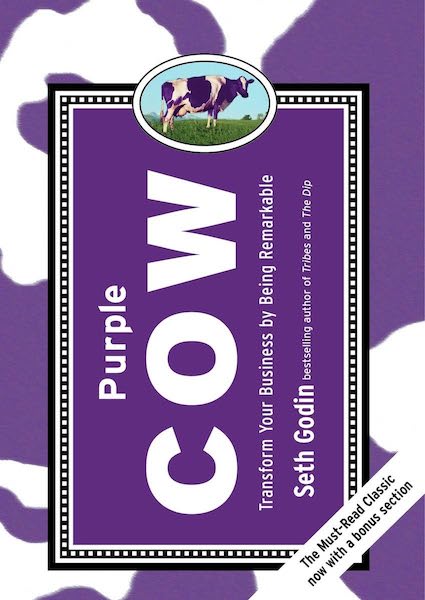
Seth Godin created this marketing masterpiece for those who don’t want their businesses to look like every other penguin in a flock. Purple Cow is a book about creating something worth noticing in a congested marketing highway.
Although Seth doesn’t highlight what you need to do, you are more likely to get fired up after reading this book.
Key Takeaways From Purple Cow
- The need for differentiation: To succeed in today’s crowded marketplace, you need differentiation that is remarkable and relevant to the needs and desires of the target audience.
- The power of ideas: Remarkable products and services are based on remarkable ideas. These ideas should be bold, unique, and relevant to the target audience.
- The importance of being bold: Remarkable products and services require boldness and courage to break free from the status quo. This may involve taking risks, challenging conventional wisdom, and being willing to fail.
- The need for constant innovation: This requires a mindset of continuous improvement and a willingness to adapt to changing market conditions.
- The importance of word-of-mouth marketing: Remarkable products and services naturally generate buzz and excitement, which can spread rapidly through social networks and other channels.
10. Zag, The #1 Strategy of High-Performance Brands (One-Off) by Marty Neumeier

Since Zag is Marty Neumeier’s third book on this list, you probably think I’m a massive fan. Well, tell you what, you are right.
Marty Neumeier’s books on branding are a prerequisite for anyone looking for marketing success. Zag is a short but powerful book that will give you ideas on standing out radically in a saturated marketplace.
After reading this book, you will have a brand marketing model that comprises four elements: focus, difference, trend, and communications.
Neumeier also provides 17 checklists for readers to use when developing and differentiating their brands.
The best part? The ideas in “Zag” are easy to understand because Neumeier writes them on a whiteboard.
Key Takeaways From ZAG
- Differentiation is critical to building a successful brand.
- Your brand should have a narrow focus.
- Consistency is crucial for building a strong brand, including your logo, website, marketing materials, and customer service.
- Your brand should have a purpose beyond making money—whether it’s sustainability or social justice.
- Your brand should adapt and evolve to stay relevant as the market and consumer preferences change.
Best Marketing Books on Consumer Behavior & Persuasion
11. Buy.logy by Martin Lindstrom

How much do we know about why we buy? What truly influences our decisions in today’s message-cluttered world? An eye-grabbing advertisement, a catchy slogan, an infectious jingle? Or do our buying decisions occur below the surface, so deep within our subconscious minds that we’re unaware of them?
Buy.logy by Martin Lindstrom answers all these questions in detail.
In “Buy.logy,” Martin Lindstrom unveils the findings from a groundbreaking neuromarketing study. This three-year, seven-million-dollar project involved brain scans of 2,000 volunteers worldwide as they viewed various advertisements, logos, brands, and products.
The results dramatically challenge our traditional understanding of what captures our interest and drives our purchasing decisions.
The book uncovers results from the study, which hints at how our brains respond to branding and advertising in complex and often unconscious ways, which can influence our purchasing decisions without realizing it.
The book also talks about how companies that focus on creating strong emotional connections with their customers rather than simply promoting product features are often more successful in building lasting brand loyalty.
12. The Psychology Influence of Persuasion by Robert B. Cialdini

Dr. Robert Cialdini, an authority in influence and persuasion, has conducted thirty-five years of rigorous, evidence-based research. This extensive study, including a three-year intensive program, underpins his acclaimed work.
The Psychology Influence of Persuasion details six universal persuasion principles—an integral part of marketing. You’ll learn to master these principles to become an effective persuader and shield yourself from manipulation.
In “Influence,” Dr. Robert Cialdini explains five fundamental principles that motivate people to say “yes”:
- Reciprocation means we return favors
- Social Proof shows we follow the crowd
- Authority suggests we listen to experts
- Commitment and Consistency make us stick to our choices
- Scarcity drives us to seize rare opportunities
Understanding these can make you more persuasive.
13. Made to Stick by Chip Heath & Dan Heath

In this marketing book, Chip and Dan Heath tackle why some ideas thrive while others die and how to improve the chances of worthy ideas. They reveal the anatomy of ideas that stick and explain ways to make ideas stickier, such as applying the “human scale principle,” using the “Velcro Theory of Memory,” and creating “curiosity gaps.”
Provocative, eye-opening, and often surprisingly funny, Made to Stick will show you the vital principles of winning ideas and how to apply these rules to make your messages stick.
Best Content Marketing Books of All Times
14. Epic Content Marketing by Joe Pullizzi

Epic Content Marketing by Joe Pullizzi is one of the best content marketing books of all time.
Joe Pullizzi founded the Content Marketing Institute (CMI), one of the leading content marketing educational resources for enterprise brands.
It is safe to assume that Pullizzi knows a thing or two about content marketing, and in this book, he gives plenty of great advice about how to do it right.
“Epic Content Marketing” systematically involves developing stories that inform and entertain customers without telling them to act. Epic content enables you to position your business as a trusted expert in its industry, which is what customers share and discuss.
There are six principles:
- Your content must fill an unmet need or answer a question for your customer
- Deliver content consistently
- Your content should be in your voice, preferably with some humor
- Express an opinion rather than give a balanced history report
- Avoid sales speak, as it destroys the value of your content
- Produce the very best content in your niche
The book covers the basics, the importance of content distribution, and the channels you can use to reach and engage your audience.
Finally, you’ll also read about how content marketing success hinges on your ability to measure and analyze results and use those insights to refine your content strategy over time.
15. Everybody Writes: Your Go-To Guide to Creating Ridiculously Good Content by Ann Handley

Ann Handley’s “Everybody Writes: Your Go-To Guide to Creating Ridiculously Good Content” is indispensable for anyone looking to succeed through content marketing or simply wanting to create good content.
Handley discusses how, in a content-driven world, everyone is a writer in some capacity. This book is a practical manual with tips on crafting engaging content that resonates with audiences.
She covers everything from grammar and story crafting to how to create compelling blog posts and social media updates.
And you won’t just get boring discussions. The book offers actionable insights that are easy to implement, making it particularly valuable for content marketers looking to enhance their writing skills and engage more effectively with their audiences.
Best Social Media Marketing Books
16. Social Media ROI by Olivier Blanchard
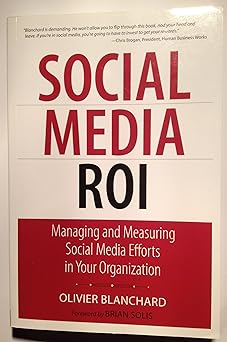
In the book Social Media ROI, top branding and marketing expert Olivier Blanchard attempts to demystify the biggest question that many business managers ask:
What is social media’s return on investment?
Why should my business use it?
Finally, how do we justify the investment?
You’ll learn the best practices for strategy, planning, execution, measurement, analysis, and optimization in Social Media.
The book also highlights that social media ROI is not just about financial returns but also non-financial returns such as customer loyalty, brand awareness, and reputation.
17. No B.S. Guide To Direct Marketing by Dan Kennedy & Kim Walsh-Phillips

No B.S. Guide to Direct Marketing gives you a cheat code on how to succeed in marketing.
In this book, Dan S. Kennedy teamed up with Kim Walsh-Phillips to dare readers to think beyond vanity metrics—likes, shares, and comments—and focus on generating leads and sales.
Sprinkled with many case studies and examples, this is a book you’d want your social media manager to go through before they even attempt to post anything. This book covers practical strategies for leveraging social media as a lead magnet.
The book also discusses the importance of targeting the right audience, crafting compelling offers, and providing clear calls to action.
You’ll also learn about testing and tracking to refine strategies and the significance of follow-up to build trust and increase sales likelihood.
Best Marketing Books on Strategy & Innovation
18. Permission Marketing by Seth Godin

Permission Marketing by Seth Godin is one of the best digital marketing books of all time and a must-read for those looking to excel in this competitive business world.
You’d have to live under a rock if you haven’t heard of Seth Godin, especially if you have been in this business long enough. For the uninitiated, Seth Godin is one of the most influential and brightest gurus in online marketing.
Whether it’s the TV commercial that breaks into our favorite program or the telemarketing phone call that disrupts a family meal, traditional advertising is based on the hope of snatching our attention away from whatever we are doing.
Seth Godin calls this Interruption Marketing. Instead of annoying potential customers by interrupting their most coveted commodity, time, Godin offers consumers incentives to accept advertising voluntarily.
By reaching out to only those individuals who have expressed an interest in learning more about a product, Permission Marketing enables companies to develop long-term relationships with customers and significantly improve the chances of making a sale.
This book’s key point is that by asking for permission to communicate with your audience, you can provide more valuable content and invoke their trust and loyalty.
The book also details the importance of segmenting your audience based on their interests, offering incentives, and continuously nurturing relationships with your subscribers.
19. Competing Against Luck by Dr. Clayton Christensen, Taddy Hall, Karen Dillon, & David Duncan

Looking for a game-changing marketing book to learn how to develop and market products and services that customers can’t say no to? Dr. Clay Christensen and David Duncan’s book, Competing Against Luck, is all you need.
This book focuses on the The-Jobs-To-Be-Done (#JTBD) theory of innovation—a powerful approach to understanding customer behavior.
The book suggests that to outperform both competitors and chance, one should create a product or service specifically designed to fulfill customers’ requirements.
Using this book, you will learn how to use the #JTBD theory to:
- Define the business you are through the lens of the customers
- Understand your direct and indirect competitors – according to your customers’ eyes.
- Understand what drives customers to hire or not to hire your products
- Understand why customers would fire certain products
- Understanding your customers’ emotional and social needs.
- Identify conversion opportunities that can help grow your business
- Build a product or service that is customer-centric
20. Good Strategy, Bad Strategy by Richard P. Rumelt

What goes into developing a marketing strategy? What’s the difference between a good and bad marketing strategy? Richard P. Rumelt’s book Good Strategy, Bad Strategy answers all these questions sufficiently.
Although he doesn’t specifically discuss marketing, the core principles discussed in the book can also apply to marketing.
Rumelt provides dozens of examples of good and bad strategies. According to Rumelt, a good strategy consists of three elements: a diagnosis of the problem, a guiding policy, and coherent action.
Well, I have to confess—this is one of my favorite marketing books of all time.
21. The Anatomy of Buzz by Emanuel Rosen

In The Anatomy of Buzz, former marketing VP Emanuel Rosen pinpoints the products and services that benefit the most from a buzz-a universe that embraces everything from high-tech equipment to books, various consumer and entertainment products to legal and other support services and offers specific strategies for creating and sustaining effective word-of-mouth campaigns.
After interviewing over 150 executives, marketing leaders, and researchers who have successfully built buzz for major brands, Rosen describes the ins and outs of attracting the attention of influential first users and “big-mouth” movers and shakers.
He also discusses proven techniques for stimulating customer-to-customer, including how companies can spread the word to new territories by using customer hubs and networks on the Internet and elsewhere.
Top Five Essential Marketing Strategies for Success in 2024
The best marketing tips are all centered around human behavior.
Understanding human psychology is essential to ensuring the effectiveness of your conversion optimization, SEO, design, and ad efforts.
In this section, I highlight some of the best marketing tips that, if properly implemented, will help you grow your business.
1. Set a Goal(with metrics) and a budget.
I want to increase sales by 25%.
I want to increase our MQL by 13%
These are different examples of goals businesses can set for themselves.
For e-commerce businesses, this could mean increasing sales of their merchandise, apparel, and beauty products by 30%.
The psychology behind this is that with a goal and a budget, it becomes easier to determine whether your campaign succeeded.
Here are a few tips for setting your marketing campaign goal and budget:
- Choose 1-5 KPIs to measure. Qualified leads, traffic, and direct revenue are the most popular KPIs to measure.
- Set a realistic budget. The U.S. Small Business Administration recommends spending 7-8% of total revenue on your marketing campaigns.
- Focus on the process, not the goal. Once you set your goal, create a method for achieving it, using your KPIs to measure and continually improve that process.
2. Always conduct user research.
Before launching a product, you must know if there’s a need for your product in the market.
Sometimes, businesses develop services and products that users don’t need. The result? They end up dying off!
Founders often make the mistake of believing that if they market their ideas, they’ll find a demand in the market.
This goes against the core and fundamental principles of marketing. You don’t force products on people. You can’t create demand—you can only channel existing demand.
Failure to do this sets up your product for the ‘product death cycle.’
Here is one of my favorite quotes from Legendary copywriter Eugene Schwartz; ‘The greatest mistake marketers make is trying to create demand.’
3. Invest in influencer marketing
We’re in the creator economy—another name for influencer marketing.
The truth is every niche has influencers. It doesn’t have to be someone shouting in front of a camera and getting engagements, but there are individuals with considerable influence in every industry.
Here are some steps to creating a successful influencer marketing campaign:
- Select your KPIs
- Focus on the social media channels where your target market is most present.
- Find a credible influencer
- Plan your publishing schedule
- Consistently improve and measure your outcomes
Here’s an example of how Walmart used Influencer marketing to drive interest in their Black Friday deal:
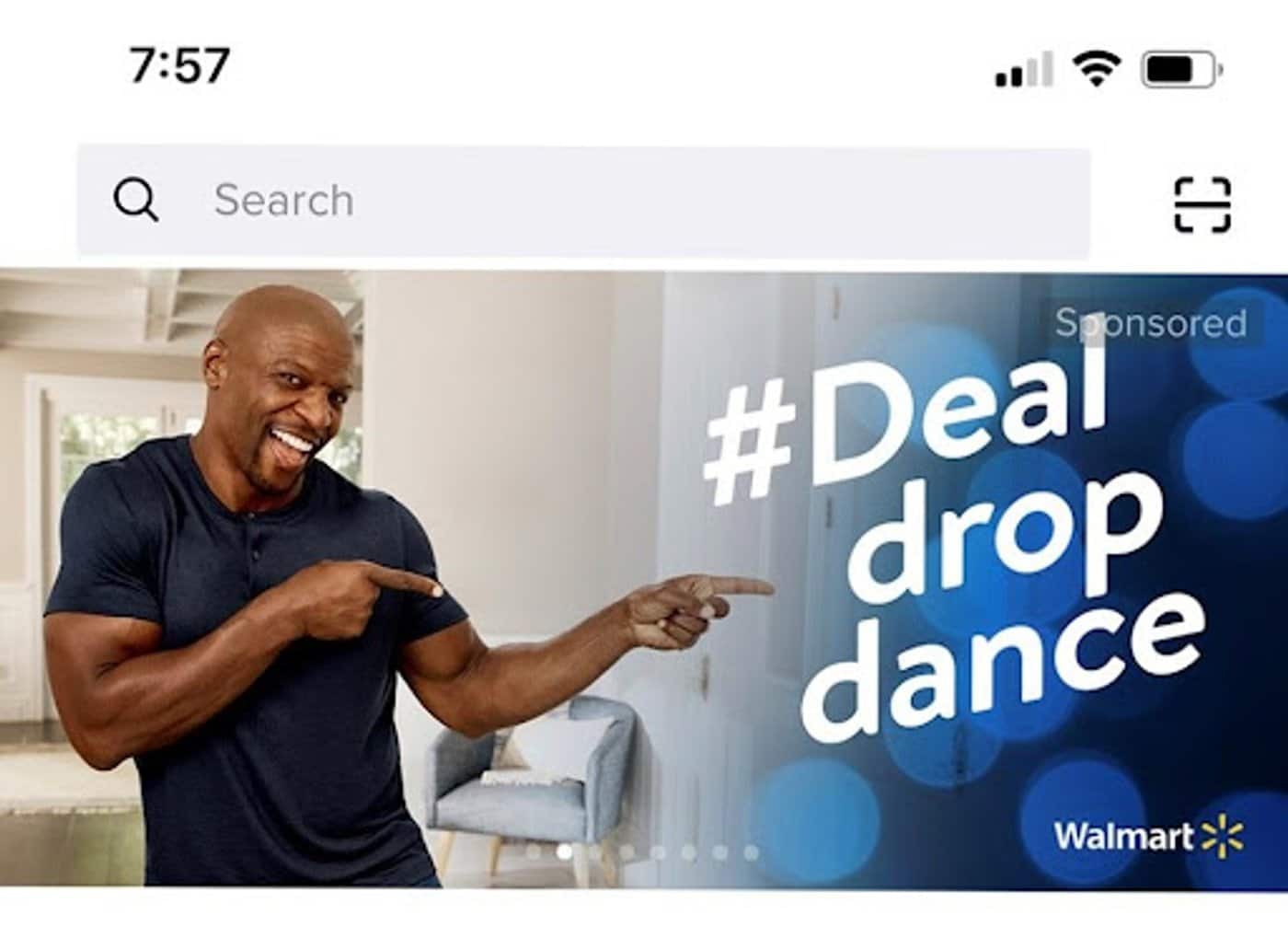
In this case, Walmart reached out to TikTok Influencers. They used influencers to get eyeballs on their hashtag #Dealdropdance.
Walmart contacted six specific influencers: ourfire, bdash_2, montanatucker, kidrl, dreaknowsbest, and kingcamo_1.
All these influencers had to do was motivate and encourage their followers to post videos while dancing or having fun in Walmart stores.
At the end of the campaign, the posts reached 16 million followers,
4. Leverage Video Marketing
According to the latest video marketing statistics, people are 52% more likely to share video content than any other type.
These stats highlight the growing preference for video as a primary form of content consumption.
Video marketing is not just about grabbing your target audience’s attention quickly. It is a way to dynamically tell your brand’s story, demonstrate your products in the best light possible, and explicitly convey emotions.
They also help you educate your audience and position yourself as an authority in your industry.
For instance, Home Depot has made strides with DIY enthusiasts by posting how-to videos on everything from fixing a leaky faucet to building a backyard pergola.

These videos empower customers while positioning Home Depot as a helpful and knowledgeable ally in home improvement.
Here are some more tips to help you make the most out of your video marketing strategy:
- Capitalize on storytelling
- Invest in high-quality video production
- Optimize for mobile viewing
5. Develop Real Relationships Through Email Marketing
59% of marketers claim that email is their most effective marketing channel for revenue generation; this is one strategy you don’t want to ignore.
If you haven’t started building your email list, here are some steps you can consider:
- Create a long-term content strategy to drive organic traffic to your website.
- Create multiple opt-in offers
- Utilize an email list popup form
- Add a banner with an invitation to subscribe to your email list with your business signature.
Wrapping Up: Key Takeaways from the Best Marketing Books!
So, there you have it! Diving into some of the best marketing books is like giving yourself a masterclass in cutting-edge marketing strategies. Some even help you hone your business strategy in everyday life.
Whether it’s gaining deeper insights into consumer behavior, mastering content creation, or making the most of social media, each book packs a powerful punch of knowledge that can help grow your business with a winning and successful marketing strategy.
And remember the marketing tips for 2024! These strategies are fresh and geared to keep you ahead of the curve. So, pick up some marketing books based on your industry and interest, use what you learn, do market research, and watch your business grow.
Resources You’ll Love.
1. What are the 4 Ps of Marketing? Understanding the Basics
2. How to Manage a Remote Team in a Way that Drives Business Growth
3. How To Build Thought Leadership From Scratch For Your Business


